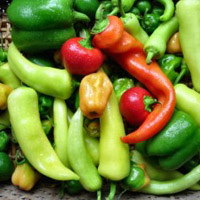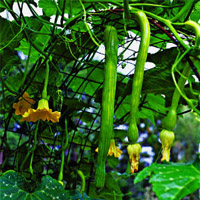Small Space Vegetable Gardening
15 Creative Ways to Grow Your Own Food in Any Space
Living in a small space doesn’t mean you have to give up your dream of growing fresh, homegrown vegetables.
Whether you’re in an apartment with just a balcony, have a tiny backyard, or only have access to a sunny windowsill, you can still enjoy the satisfaction and savings of growing your own food.
Small space vegetable gardening has revolutionized how urban dwellers approach food production, proving that size truly doesn’t matter when it comes to creating a productive garden.
In this comprehensive guide, we’ll explore proven strategies, space-saving techniques, and creative solutions that will help you maximize every square inch of your growing space.
From vertical gardens that climb your walls to compact container systems that fit on a tabletop, you’ll discover how to create an abundant vegetable garden no matter how limited your space might be.
Why Small Space Vegetable Gardening Works
The Science Behind Intensive Growing Methods
Small space gardening isn’t just about cramming plants into tight quarters – it’s about understanding how plants actually grow and optimizing conditions for maximum productivity.
Traditional row gardening wastes enormous amounts of space with pathways and inefficient spacing. Modern small space techniques like square foot gardening and intensive planting can actually produce more food per square foot than conventional large gardens.
Economic Benefits of Compact Growing
When you grow vegetables in a small space, you’re making every dollar count.
A single 4×4 foot raised bed can produce hundreds of dollars worth of fresh vegetables annually, while a well-managed container garden on a balcony can save a family $500-800 per year on grocery bills.
The initial investment in quality containers, soil, and seeds pays for itself within the first growing season.
Health and Convenience Advantages
Small space gardens are easier to maintain, require less water, and allow for better pest management. You can harvest fresh vegetables steps from your kitchen, ensuring peak nutrition and flavor.
The compact nature means you can provide optimal care to each plant, resulting in healthier, more productive vegetables.
Essential Planning for Small Space Success
Assessing Your Available Space
Before you plant a single seed, take inventory of your growing space.
Measure the area, note how many hours of direct sunlight it receives, and consider factors like wind exposure and water access.
Even a space as small as 2×2 feet can accommodate a surprising variety of vegetables when planned properly.
Document the sun patterns throughout the day – most vegetables need at least 6 hours of direct sunlight, though leafy greens can thrive with 4-5 hours.
Consider vertical space as well; walls, fences, and railings can all become productive growing areas.
Soil and Container Considerations
In small space gardening, soil quality is paramount.
You’re working with limited root space, so every cubic inch must be nutrient-rich and well-draining. Invest in high-quality potting mix rather than garden soil, which is too heavy for containers and may contain diseases or pests.
Choose containers with adequate drainage holes and sufficient depth for your chosen vegetables. Shallow-rooted crops like lettuce need only 6-8 inches of soil depth, while tomatoes require 12-18 inches for optimal growth.
Water Management Systems
Efficient watering becomes crucial in small spaces, especially with container gardening where plants dry out faster.
Consider installing a drip irrigation system or soaker hoses for consistent moisture. Group containers based on watering needs – Mediterranean herbs need less water than leafy greens.
Best Vegetables for Small Space Growing
High-Yield Compact Varieties
Not all vegetables are created equal when it comes to small space productivity.
Focus on varieties bred specifically for container growing or those that naturally produce high yields in minimal space.
Cherry tomatoes, for example, can produce dozens of fruits from a single plant in a 5-gallon container.
Leafy greens like lettuce, spinach, and kale are perfect for small spaces because you can harvest outer leaves while the plant continues growing.
Bush varieties of beans and peas eliminate the need for extensive trellising while still providing substantial harvests.
Vertical Growing Champions
Some vegetables seem designed for vertical growing. Pole beans, peas, cucumbers, and small squash varieties eagerly climb trellises, allowing you to harvest pounds of food from just a few square feet of floor space. Even root vegetables like carrots can be grown in deep, narrow containers that maximize vertical space.
Quick-Growing Succession Crops
Radishes, baby lettuce, microgreens, and herbs can be ready to harvest in just 3-4 weeks, allowing you to grow multiple crops in the same space throughout the season.
These fast-maturing vegetables are perfect for continuous harvesting and keeping your small garden constantly productive.
Space-Maximizing Growing Techniques
Square Foot Gardening Method
Square foot gardening revolutionizes small space growing by dividing growing areas into 1-foot squares, each planted with a specific number of plants based on their mature size.
This intensive method can yield up to 100% more vegetables than traditional row gardening in 80% less space.
The beauty of square foot gardening lies in its organization and efficiency.
Large plants like tomatoes get one square foot each, medium plants like lettuce get four per square, and small plants like radishes can fit 16 per square foot.
Companion Planting Strategies
Companion planting maximizes space while improving plant health and yields.
Classic combinations like tomatoes with basil, or the “Three Sisters” planting of corn, beans, and squash, allow multiple crops to share the same space beneficially.
Interplanting fast-growing crops between slower-maturing ones ensures continuous harvests.
Plant lettuce between tomato plants, or grow radishes alongside slower-germinating carrots to mark rows and maximize space usage.
Succession Planting for Continuous Harvest
Instead of planting all your lettuce at once, plant a small amount every 2-3 weeks for continuous harvests throughout the growing season. This technique prevents gluts of produce while ensuring you always have fresh vegetables ready to harvest.
Vertical Gardening Solutions
Wall-Mounted Growing Systems
Transform any vertical surface into a productive garden with wall-mounted planters, pocket gardens, or modular growing systems.
These solutions can increase your growing space by 300-400% without using any additional floor space.
Living walls filled with herbs and leafy greens not only provide fresh food but also create beautiful, functional garden features.
Many wall systems include built-in irrigation, making maintenance simple even for beginners.
Trellis and Support Structures
Strategic use of trellises, obelisks, and support structures allows vining crops to grow upward instead of outward.
A 6-foot trellis can support multiple cucumber or bean plants that would otherwise require 20-30 square feet of ground space.
Consider creating a “vegetable wall” using a strong trellis system where you can grow pole beans at the bottom, cucumbers in the middle, and lightweight herbs or cherry tomatoes at the top.
Hanging Garden Options
Hanging baskets and suspended containers add another dimension to small space gardening.
Trailing varieties of tomatoes, strawberries, and herbs thrive in hanging containers while creating attractive displays.
Position hanging gardens to take advantage of unused overhead space while ensuring they don’t block light from ground-level plants.
Many vegetables, including peppers and small eggplants, adapt well to hanging container culture.
Container Gardening Mastery
Choosing the Right Containers
Container selection can make or break your small space garden. Size matters – too small and plants become rootbound and stressed, too large and you waste precious space.
Match container size to plant needs: 1-gallon containers for herbs, 3-5 gallons for peppers and smaller vegetables, and 10+ gallons for large plants like tomatoes.
Consider self-watering containers for consistent moisture, fabric pots for better root development, or window boxes for herbs and leafy greens.
Ensure all containers have adequate drainage to prevent root rot.
Soil Mix Optimization
Commercial potting mixes provide the foundation for healthy container vegetables, but you can improve them further.
Add compost for nutrients, perlite for drainage, and coconut coir for moisture retention.
A typical mix might be 50% quality potting soil, 25% compost, and 25% drainage material.
Avoid using garden soil in containers – it’s too heavy, may contain diseases, and doesn’t drain properly in confined spaces. Invest in quality soil mix; it’s the foundation of your garden’s success.
Mobility and Seasonal Adaptation
One advantage of container gardening is mobility. Use wheeled plant caddies to move containers to follow the sun, protect from storms, or bring tender plants indoors during cold snaps.
This flexibility allows you to optimize growing conditions throughout the season.
Group containers on rolling platforms or use lightweight pots that can be easily moved.
This mobility extends your growing season and allows you to experiment with different locations to find optimal growing conditions.
Indoor Growing Options
Windowsill Gardens
South-facing windows provide ideal conditions for herbs, microgreens, and small vegetables year-round. Create tiered windowsill gardens using shelving to maximize vertical space while ensuring all plants receive adequate light.
Cherry tomatoes, peppers, and herbs like basil and cilantro thrive in sunny windows. Use reflective materials behind plants to increase light intensity and ensure even growth.
Grow Light Systems
LED grow lights have revolutionized indoor gardening, making it possible to grow full-size vegetables in basements, spare rooms, or any indoor space. Modern LED systems are energy-efficient and produce little heat, making them perfect for small space growing.
Set up growing stations with adjustable LED lights that can accommodate plants from seedling to harvest. Many vegetables can be grown entirely under artificial light, providing fresh food year-round regardless of outdoor conditions.
Hydroponic and Aeroponic Systems
Soil-less growing systems maximize space efficiency while producing exceptional yields. Simple hydroponic systems like deep water culture or nutrient film technique can fit on countertops while producing restaurant-quality vegetables.
These systems grow plants faster than soil-based methods and use less water overall. Lettuce, herbs, and leafy greens are particularly well-suited to hydroponic growing in small spaces.
Seasonal Planning and Year-Round Production
Cool Season Strategies
Extend your growing season by understanding which vegetables thrive in cooler weather. Kale, Brussels sprouts, and root vegetables actually improve in flavor after light frosts, allowing you to harvest fresh vegetables well into winter.
Use season extenders like cold frames, row covers, or mini hoop houses to protect cool-season crops and extend harvests. Even simple plastic tunnels can add 4-6 weeks to your growing season.
Warm Season Maximization
Make the most of summer heat with warm-season crops like tomatoes, peppers, eggplants, and summer squash.
These vegetables need consistent warmth and can produce heavily in containers when given adequate space and nutrition.
Consider heat-tolerant varieties that continue producing through summer heat waves. Provide afternoon shade for cool-season crops during the hottest months to prevent bolting.
Winter Growing Techniques
Cold-hardy vegetables like spinach, mache, and Asian greens can be grown through winter in many climates with minimal protection.
Use containers that can be moved to protected locations during extreme weather.
Microgreens provide fresh nutrients year-round and can be grown indoors on any sunny windowsill. These nutrient-dense baby vegetables are ready to harvest in just 7-14 days.
Maintenance and Care in Small Spaces
Efficient Watering Systems
Small space gardens require more frequent but precise watering. Container plants dry out faster than ground-planted vegetables, especially during hot weather.
Install drip irrigation or soaker hose systems to provide consistent moisture without waste.
Group plants with similar water needs together and use mulch to retain soil moisture. Self-watering containers can reduce daily maintenance while ensuring plants never experience drought stress.
Pest Management at Scale
Small space gardens make pest management more manageable and effective. Regular inspection of a few containers is easier than monitoring acres of garden space.
Use integrated pest management techniques like beneficial insects, companion planting, and organic sprays.
Encourage beneficial insects with flowers planted among vegetables. Marigolds, nasturtiums, and herbs like dill and fennel attract predatory insects that control pest populations naturally.
Nutrition and Fertilizing Programs
Container vegetables need more frequent fertilizing than ground-planted crops because nutrients leach out with frequent watering.
Use slow-release granular fertilizers supplemented with liquid feeding every 2-3 weeks during active growth.
Compost tea provides gentle, organic nutrition while beneficial microorganisms that improve soil health. Many small space gardeners maintain small compost systems to create their own liquid fertilizers.
Creative Small Space Solutions
Repurposed Container Ideas
Almost any container can become a planting vessel with proper drainage.
Old laundry baskets lined with landscape fabric make excellent large planters, while food-grade buckets provide deep root space for tomatoes and peppers.
Wooden boxes, metal tubs, and even old shoes can be transformed into unique planters that add character to small space gardens.
Ensure all containers have drainage holes and are food-safe if growing edibles.
Micro-Garden Designs
Design tiny gardens that pack maximum impact into minimal space.
A 2×3 foot space can accommodate a complete salad garden with lettuce, tomatoes, herbs, and peppers using vertical growing techniques.
Create themed micro-gardens like a “pizza garden” with tomatoes, basil, oregano, and peppers, or a “salsa garden” with tomatoes, peppers, cilantro, and onions.
These focused gardens are both functional and fun.
Space-Sharing Strategies
Share gardening space with neighbors through community gardens, shared yard agreements, or apartment building roof gardens.
Pool resources for bulk soil purchases and share tools and knowledge.
Consider guerrilla gardening in neglected urban spaces, though always respect property rights and local regulations.
Even small contributions to community beautification can provide fresh food while building neighborhood connections.
Troubleshooting Common Small Space Problems
Light Limitation Solutions
Insufficient light is the most common challenge in small space gardening.
Supplement natural light with LED grow lights, use reflective materials to maximize available light, and choose shade-tolerant varieties for low-light areas.
Position light-colored mulches and reflective surfaces around plants to increase light intensity. Consider pruning nearby vegetation or cleaning windows to improve natural light penetration.
Space Optimization Challenges
When space is truly limited, focus on high-value crops that provide maximum nutrition and flavor. Herbs offer exceptional value per square inch, while microgreens provide concentrated nutrition in minimal space.
Use every available surface including railings, walls, and hanging areas. Stackable planters and tiered growing systems multiply available planting space without expanding the garden’s footprint.
Climate Control Issues
Containers heat up and cool down faster than ground soil, creating temperature stress for plants.
Use larger containers for better temperature stability, and consider double-potting sensitive plants.
Provide wind protection for exposed balcony gardens and use shade cloth during extreme heat. Mulching container surfaces helps moderate soil temperature and conserve moisture.




